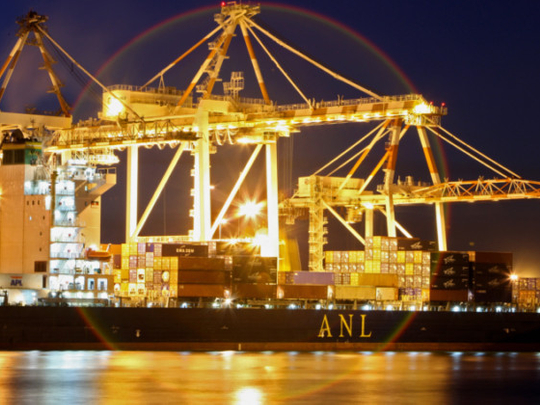
Sydney: Australia’s economy enjoyed solid growth last quarter to again outpace its peers, but there was little time to celebrate as tumbling export prices and a slowdown in China argued for a cut in interest rates now to safeguard growth in the future.
Government data on Wednesday showed gross domestic product (GDP) rose 0.6 per cent in the second quarter, moderating from the previous quarter when it jumped an exceptional 1.4 per cent.
That left GDP up a brisk 3.7 per cent compared to the second quarter of 2011, with domestic demand showing a particularly strong rise of 5.9 per cent.
But while the economy had momentum then, the future looks more difficult as falling prices for key exports such as iron ore drain incomes and cool the red-hot mining sector.
“The second half is going to be much more challenging,” said Stephen Walters, chief economist at JPMorgan. “You’re not going to get the same sort of growth rate we have had.”
The Reserve Bank of Australia (RBA) on Tuesday left interest rates steady at 3.5 per cent but highlighted the recent sharp price falls in resource exports and admitted to uncertainty about the outlook for China, Australia’s biggest customer.
Rate cut come closer
The more sombre tone has seen markets narrow the odds for a rate cut as soon as October, following easing in May and June. Interbank futures put a 64 per cent probability on a move in October and are more than fully priced for a couple of cuts to three per cent by year end.
Overnight indexed swaps, which show where the market thinks the cash rate will be over time, put rates at 2.82 per cent in 12 months. Yields on Australian 10-year bonds are down at three per cent, so it is cheaper for the government to borrow for a decade than for banks to borrow overnight.
Muted domestic inflation does mean the RBA has plenty of room to cut rates, which at 3.5 per cent are among the highest in the developed world.
The mounting talk of an easing dragged the Australian dollar down to a six-week trough of $1.0190. A fall in the currency could actually comfort the central bank as its persistent strength has been at odds with the weakness in the country’s commodity prices.
Spot iron ore, Australia’s single biggest export earner at more than A$60 billion (Dh224.2 billion) a year, has tumbled by one-third since early July.
Already some miners are scaling back on their more ambitious expansion plans. Fortescue Metals Group on Tuesday slashed planned investment spending for fiscal 2013 by $1.6 billion to $4.6 billion.
Outperforming, for now
Still, Wednesday’s data did show an economy outperforming its developed world peers. Australia’s annual growth of 3.7 per cent compared with 2.3 per cent in the United States and falls of 0.4 per cent in the European Union and 0.5 per cent in Britain.
Treasurer Wayne Swan was quick to point out the difference, telling reporters: “The Australian economy grew faster than every single major advanced economy both in the June quarter and over the year.”
In all, GDP for the 12 months to June reached A$1.47 trillion ($1.5 trillion) in current dollars, or A$64,503 for each of Australia’s 22.7 million people. That compares with per capita GDP in the United States of $49,705.
Among the main growth drivers in the second quarter were household consumption, with spending on new vehicles up almost 10 per cent, and 23 per cent for the year.
Business investment added only modestly to growth but that followed a barnstorming performance in the first quarter, with engineering spending up 60 per cent for the year.
Public spending was also surprisingly upbeat given the Labor government is committed to tightening fiscal policy to reach a budget surplus next year.
Yet falling export prices took a toll on the terms of trade, which dropped 0.6 per cent in the quarter and 7.1 per cent for the year. And it looks likely to fall a lot further this quarter given the recent plunge in iron ore prices.
That in turn will weigh on national income, through lower profits, wages and tax receipts.
“A bit of momentum is not a bad thing to have given the ever-increasing global concerns,” said Michael Blythe, chief economist at Commonwealth Bank. “But the income story is turning against us in a fairly significant way.”
“In the last ten years it’s been that ever-rising income boost from the terms of trade that’s protected us. That insulation does look like it’s a little frayed.”












